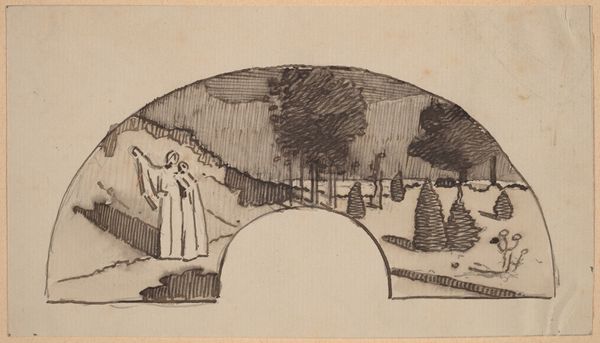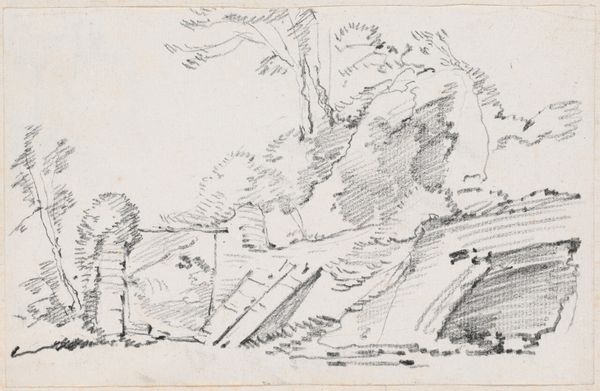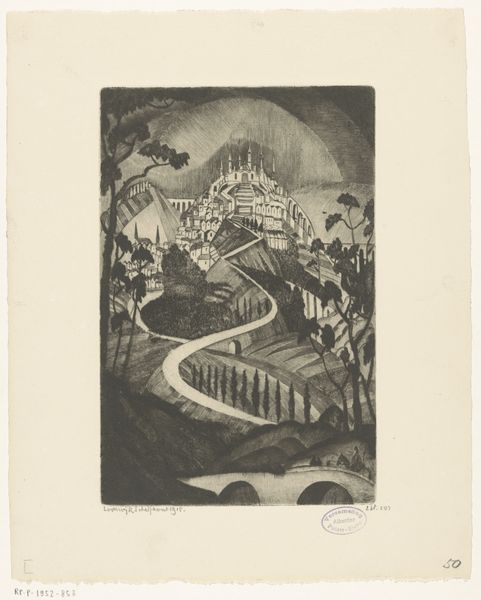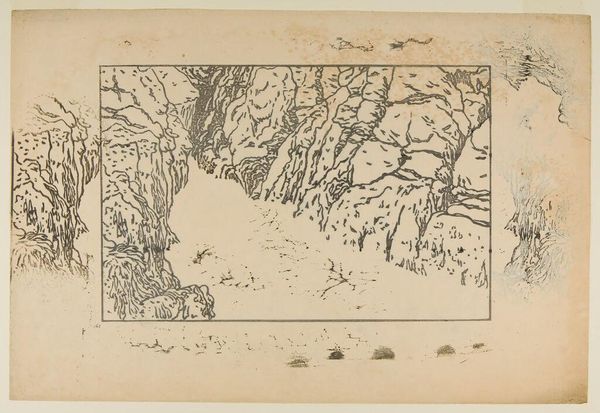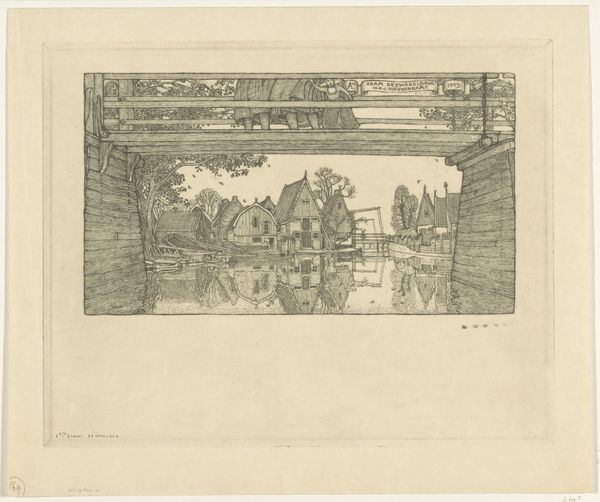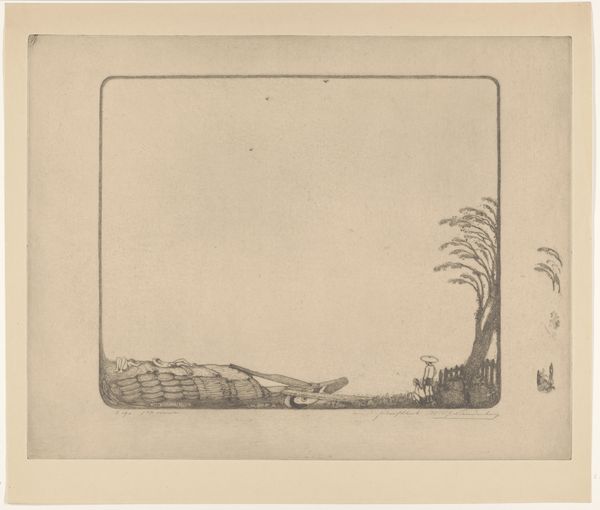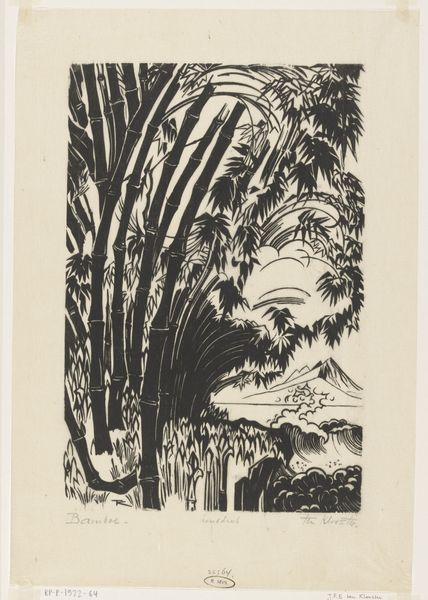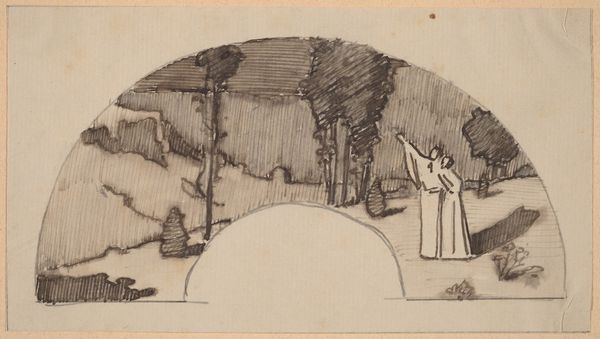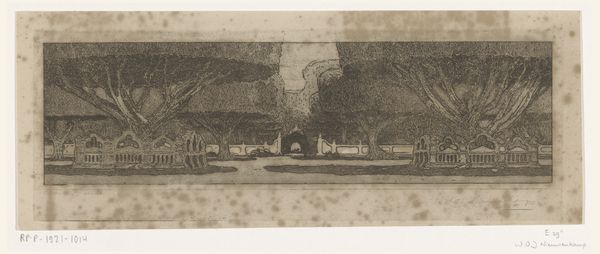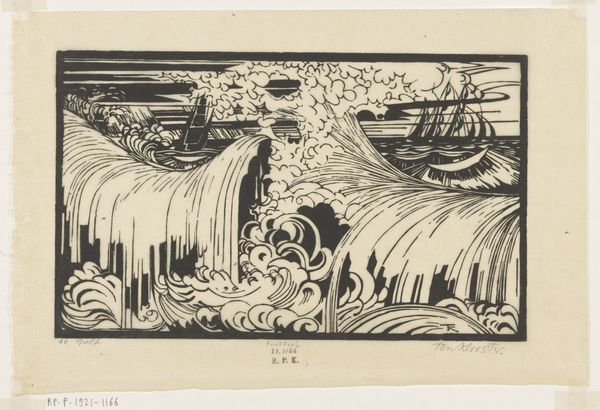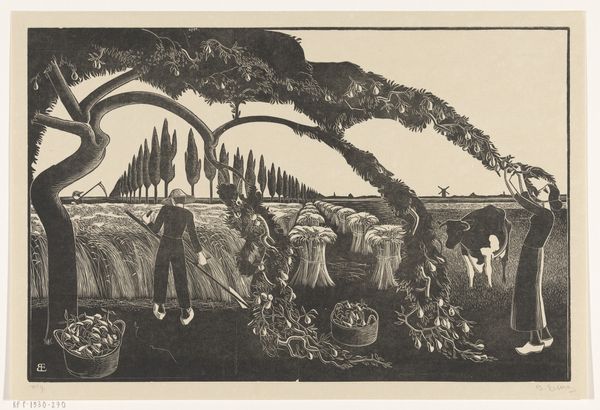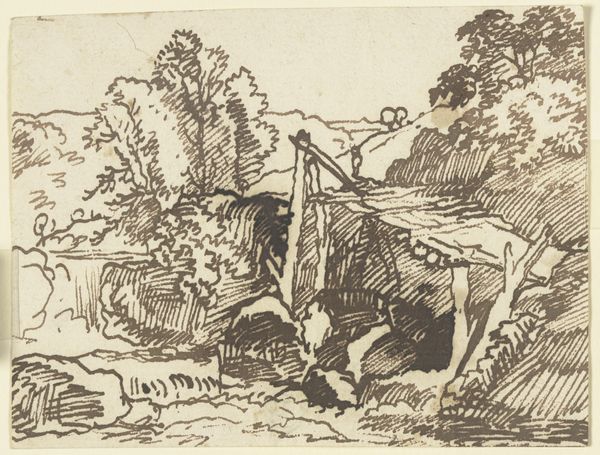
drawing, ink, pen
#
drawing
#
pen sketch
#
pencil sketch
#
landscape
#
ink
#
pen work
#
symbolism
#
pen
Dimensions: sheet: 6.4 × 11.4 cm (2 1/2 × 4 1/2 in.) mount: 30.2 × 46.1 cm (11 7/8 × 18 1/8 in.)
Copyright: National Gallery of Art: CC0 1.0
Curator: Here we have Charles Sprague Pearce’s, *Study for an Archway*, believed to have been made sometime between 1890 and 1897, created with pen and ink on paper. It's a preliminary sketch of a landscape featuring a distinct archway, which visually dominates the scene. Editor: Immediately, I’m drawn to the way the simple penwork and restricted tonal range really convey a sense of both quiet and melancholy. There's almost a dreamlike quality in its minimalist landscape and its structural representation. Curator: That sense of quietude likely arises from the nature of pen and ink as a readily available, personal medium that emphasizes process over a finished presentation, a very common form for study and documentation. I’m also wondering about Pearce’s intentions here, as archways historically hold socio-political and symbolic meaning. They traditionally represent victory, welcome, or transition. What do you suppose its function might be in his symbolism, do you think? Editor: Given its era, and his likely access to particular paper stocks and ink types, his deliberate use of line might speak more to his engagement with contemporaneous artistic values—the Symbolists come to mind—and less with grand state projects. Maybe this is simply a comment on the human urge to domesticate landscape, even when evoking the quiet grandeur of the arch. Curator: I can see that, absolutely. I suppose too, the function and availability of such art would play a role for artists, as access and display in public galleries really opened new potential venues and ways of working as the 19th Century progressed. And it raises other issues about audience, taste, collecting, and display. I wonder how we see Pearce engaging with those developments in late 19th Century Paris? Editor: That’s the exciting part about preliminary sketches like these— they can give us a privileged insight into an artist’s process of negotiating both the material means, and historical discourses of the time. It invites an almost forensic reconstruction. Curator: Exactly! Looking at *Study for an Archway* again I’m left thinking how accessible such forms could make this piece and others for a broader public, where a painting of such scale could not be housed, such pieces could still speak to people regardless of socio-economic standing. Editor: I think it prompts us to examine those dynamics—of public and private, material and form—in more depth as well. Thanks!
Comments
No comments
Be the first to comment and join the conversation on the ultimate creative platform.
